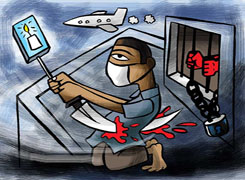Ramalingam Kalirajan |5367 Answers |Ask -Follow
Mutual Funds, Financial Planning Expert - Answered on Jun 06, 2024
He has an MBA in finance from the University of Madras and is a certified financial planner.
He is the director and chief financial planner at Holistic Investment, a Chennai-based firm that offers financial planning and wealth management advice.... more

I have 60 lakhs to invest lumpsum in mutual funds. I'll require about 20 lakhs in two years time, rest can continue to be invested for long term (8-10 years). My current mutual fund portfolio is 40 lakhs with 60% large cap, 32% mid cap, 4% small cap. Current sip funds - PP flexi cap, Quant midcap, ICICI bluechip, hdfc less, quant small cap, Invesco india contra. Please advise on ideal allocation for 60 lakhs with some example funds.
Firstly, congratulations on having a well-diversified mutual fund portfolio. With Rs 40 lakhs already invested, you have a good mix of large cap, mid cap, and small cap funds. Your current allocation is as follows:
Large Cap: 60%
Mid Cap: 32%
Small Cap: 4%
Your ongoing SIPs in various funds indicate a balanced approach. Let's now look at how to invest the additional Rs 60 lakhs you have.
Investment Strategy Overview
With Rs 60 lakhs to invest, and a need for Rs 20 lakhs in two years, the strategy must be two-pronged:
Short-Term (2 Years): Safe and liquid investments.
Long-Term (8-10 Years): Higher risk, potentially higher return investments.
Short-Term Investment (Rs 20 Lakhs)
For the Rs 20 lakhs needed in two years, prioritize capital preservation and liquidity. Consider the following:
Debt Mutual Funds: Low risk, stable returns, and high liquidity.
Liquid Funds: Excellent for very short-term needs, offering quick access to funds.
Short Duration Funds: Slightly higher returns than liquid funds, but with minimal risk.
Debt Mutual Funds
Debt mutual funds invest in fixed income securities. These are ideal for short-term goals. They offer safety and reasonable returns.
Liquid Funds
Liquid funds are low-risk, invest in short-term instruments. They provide quick access to your money, usually within a day.
Short Duration Funds
Short duration funds have a tenure of one to three years. They offer slightly higher returns than liquid funds, with minimal risk.
Long-Term Investment (Rs 40 Lakhs)
For the remaining Rs 40 lakhs, focus on growth-oriented investments. This includes a mix of equity mutual funds tailored to your risk tolerance and investment horizon.
Equity Mutual Funds
Equity mutual funds are designed for long-term growth. They invest in stocks and have the potential for high returns.
Large Cap Funds
Large cap funds invest in large, well-established companies. They are less volatile and provide steady growth.
Mid Cap Funds
Mid cap funds invest in medium-sized companies. They offer higher growth potential but with increased risk.
Small Cap Funds
Small cap funds invest in smaller companies. These funds can deliver high returns but are highly volatile.
Suggested Allocation
Based on your current portfolio and the need to balance growth and safety, here's a suggested allocation for the Rs 60 lakhs:
Short-Term (Rs 20 Lakhs)
Debt Mutual Funds: Rs 10 lakhs
Liquid Funds: Rs 5 lakhs
Short Duration Funds: Rs 5 lakhs
Long-Term (Rs 40 Lakhs)
Large Cap Funds: Rs 16 lakhs (40%)
Mid Cap Funds: Rs 12 lakhs (30%)
Small Cap Funds: Rs 8 lakhs (20%)
Flexi Cap Funds: Rs 4 lakhs (10%)
Evaluating Current Holdings
You have a robust portfolio with good fund choices. Let’s evaluate how the new investment can align with your existing holdings:
Large Cap Funds
Your 60% allocation in large cap funds is excellent for stability. Increasing this with the new Rs 16 lakhs ensures continued steady growth.
Mid Cap Funds
Your current 32% in mid cap funds aligns well with moderate risk appetite. Adding Rs 12 lakhs here maintains a balanced growth potential.
Small Cap Funds
Small cap exposure at 4% is quite conservative. Adding Rs 8 lakhs increases this to 10%, enhancing growth prospects while managing risk.
Flexi Cap Funds
Flexi cap funds offer flexibility to invest across market capitalizations. This can provide better returns with risk management. Allocating Rs 4 lakhs here diversifies your portfolio further.
Benefits of Actively Managed Funds
Actively managed funds have professional managers making investment decisions. This can lead to better performance compared to index funds, especially in volatile markets.
Disadvantages of Index Funds
Limited Flexibility: Index funds follow a fixed index and cannot adjust to market changes.
Average Returns: They aim to match the market, not outperform it.
Higher Market Risk: Entirely market-driven, exposing you to higher risk during downturns.
Benefits of Regular Funds
Investing through a Certified Financial Planner (CFP) provides several advantages over direct funds:
Expert Guidance: A CFP can help select the best funds based on your goals and risk tolerance.
Portfolio Monitoring: Regular reviews and rebalancing ensure your investments stay on track.
Access to Research: Professional advisors have access to detailed market research, aiding better decision-making.
Reviewing SIPs and New Lumpsum Investment
Your ongoing SIPs are in diverse funds, which is great for long-term wealth creation. The lumpsum investment can complement these SIPs, adding depth to your portfolio.
Assessing Existing SIPs
PP Flexi Cap: Provides flexibility across market caps, balancing risk and return.
Quant Midcap: Good for growth with moderate risk.
ICICI Bluechip: Stable returns from large cap stocks.
HDFC Less: Ensure this aligns with your goals; consider consulting your CFP.
Quant Small Cap: Adds aggressive growth potential.
Invesco India Contra: Contrarian approach can hedge against market trends.
Ideal Allocation Strategy
Combining your SIPs with the new lumpsum investment ensures a balanced, diversified portfolio. This approach maximizes growth potential while managing risk.
For Short-Term Needs
Invest Rs 20 lakhs in a mix of debt, liquid, and short duration funds. This ensures safety and liquidity for your immediate needs.
For Long-Term Growth
Invest Rs 40 lakhs in a diversified mix of large cap, mid cap, small cap, and flexi cap funds. This allocation supports growth while balancing risk.
Ongoing Portfolio Monitoring
Regularly reviewing your portfolio is essential. A Certified Financial Planner can help monitor performance and suggest adjustments as needed.
Regular Reviews
Quarterly Reviews: Ensure your investments align with market conditions.
Annual Rebalancing: Adjust your portfolio to maintain desired asset allocation.
Conclusion
Investing Rs 60 lakhs requires a thoughtful approach. Prioritizing safety for short-term needs and growth for long-term goals is key. Your current SIPs are well-chosen, and the new lumpsum investment complements them.
Benefits of Professional Guidance
A Certified Financial Planner can provide expert advice, ongoing monitoring, and access to detailed research. This enhances your investment strategy and helps achieve your financial goals.
Final Thoughts
Balancing safety and growth, diversifying investments, and regular monitoring are crucial. This strategy ensures your money works effectively for your financial future.
Best Regards,
K. Ramalingam, MBA, CFP,
Chief Financial Planner,
www.holisticinvestment.in
You may like to see similar questions and answers below
Omkeshwar Singh | Answer |Ask -Follow
Head, Rank MF - Answered on Apr 22, 2022
Omkeshwar Singh | Answer |Ask -Follow
Head, Rank MF - Answered on Aug 02, 2021
Ramalingam Kalirajan |5367 Answers |Ask -Follow
Mutual Funds, Financial Planning Expert - Answered on May 06, 2024
Ramalingam Kalirajan |5367 Answers |Ask -Follow
Mutual Funds, Financial Planning Expert - Answered on Jun 03, 2024
Ramalingam Kalirajan |5367 Answers |Ask -Follow
Mutual Funds, Financial Planning Expert - Answered on Jul 24, 2024
Dr Nagarajan J S K |58 Answers |Ask -Follow
Health Science and Pharmaceutical Careers Expert - Answered on Jul 27, 2024
Dr Nagarajan J S K |58 Answers |Ask -Follow
Health Science and Pharmaceutical Careers Expert - Answered on Jul 27, 2024
Dr Nagarajan J S K |58 Answers |Ask -Follow
Health Science and Pharmaceutical Careers Expert - Answered on Jul 26, 2024
Krishna Kumar |358 Answers |Ask -Follow
Workplace Expert - Answered on Jul 26, 2024
Krishna Kumar |358 Answers |Ask -Follow
Workplace Expert - Answered on Jul 26, 2024
Krishna Kumar |358 Answers |Ask -Follow
Workplace Expert - Answered on Jul 26, 2024
Krishna Kumar |358 Answers |Ask -Follow
Workplace Expert - Answered on Jul 26, 2024
Krishna Kumar |358 Answers |Ask -Follow
Workplace Expert - Answered on Jul 26, 2024
Krishna Kumar |358 Answers |Ask -Follow
Workplace Expert - Answered on Jul 26, 2024
Krishna Kumar |358 Answers |Ask -Follow
Workplace Expert - Answered on Jul 26, 2024






















